In Hindu tradition, the divine is not only worshipped through prayer and rituals but also through beauty. Alankaram, the sacred practice of adorning deities, is an integral part of temple rituals that reflects reverence, celebration, and deep spiritual symbolism. Every flower offered, every silk draped, and every ornament placed is a gesture of love and devotion. Across different temples, each deity is decorated in a way that reveals their divine nature and significance. Let’s explore the unique alankarams of Lord Ganesha, Spatika Lingam, Venkateshwara Swamy, Durga Mata, Lakshmi Devi, Ayyappa, Subramanya Swamy, Lord Rama, and Hanuman.
Alankaram of Lord Ganesha – Simplicity in Grandeur
Lord Ganesha, the remover of obstacles, is typically adorned with fresh durva grass, red flowers, turmeric, and modaks as offerings. During festivals like Ganesh Chaturthi, he is decorated elaborately with silk dhotis, gold ornaments, and floral garlands. His large ears are often highlighted with jasmine chains, and his vahana (mouse) is placed reverently at his feet. Ganesha’s alankaram symbolizes humility, wisdom, and joy.
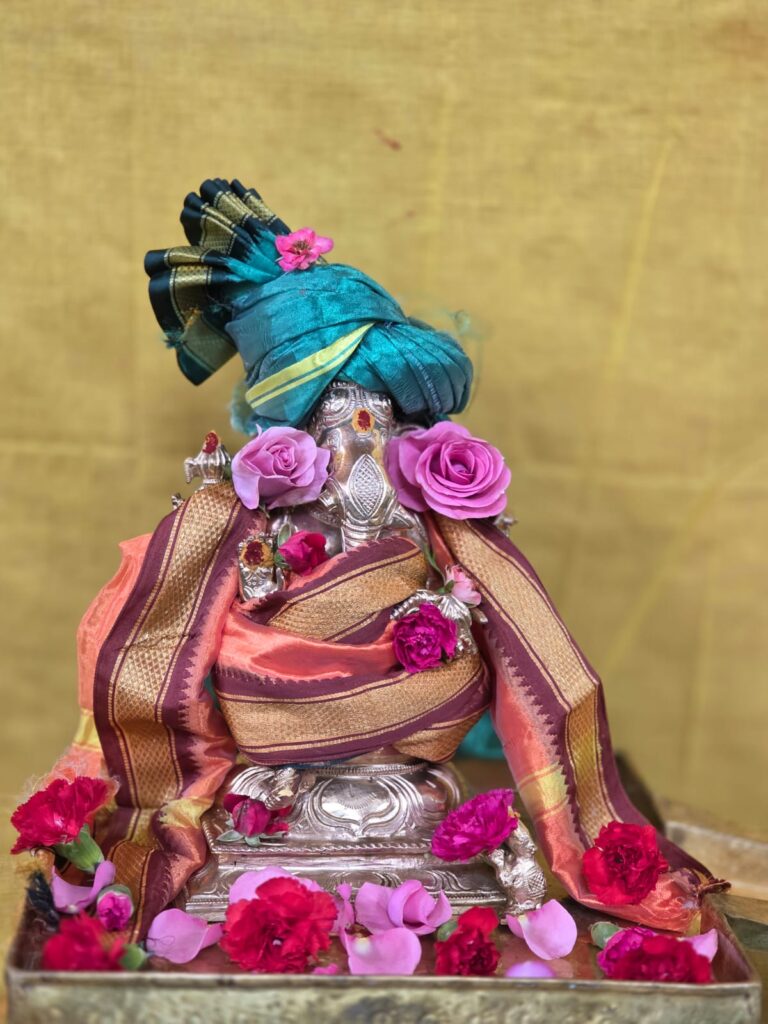
The Radiance of Spatika Lingam Alankaram
A Spatika Lingam (crystal Shiva Lingam) is worshipped for its purity, clarity, and vibrational energy. The alankaram for Spatika Lingam is minimalist yet deeply spiritual. It is bathed in sacred water, milk, honey, and vibhuti, then adorned with bilva leaves, sandal paste, and rudraksha garlands. Unlike stone Lingams, Spatika Lingams are rarely covered with heavy clothing; instead, their natural crystal glow is allowed to shine through, symbolizing the formless brilliance of Lord Shiva.

Venkateshwara Swamy – Lord of Jewels and Silken Splendor
Lord Venkateshwara, the presiding deity of Tirumala, is famed for his magnificent alankarams. At temples like Tirupati and other Vishnu shrines, he is adorned with heavy gold ornaments, diamonds, silks, and fresh tulasi garlands. Each day of the week, his attire may change, reflecting different aspects of Vishnu’s divine play. The deity’s crown, kiritam, and sacred namam mark his supreme stature as the protector of the universe.
Alankaram of Durga Mata – Fierce and Graceful
Durga Mata’s alankaram exudes both power and beauty. She is decorated with red, gold, or deep blue sarees, symbolizing strength, prosperity, and divine energy. Weapons like the trident, sword, and chakra are placed in her many arms, while garlands of hibiscus and roses surround her. During Navaratri, each day reflects a new form (Navadurga), with distinct attire and symbolism. Her alankaram embodies the triumph of dharma over adharma.
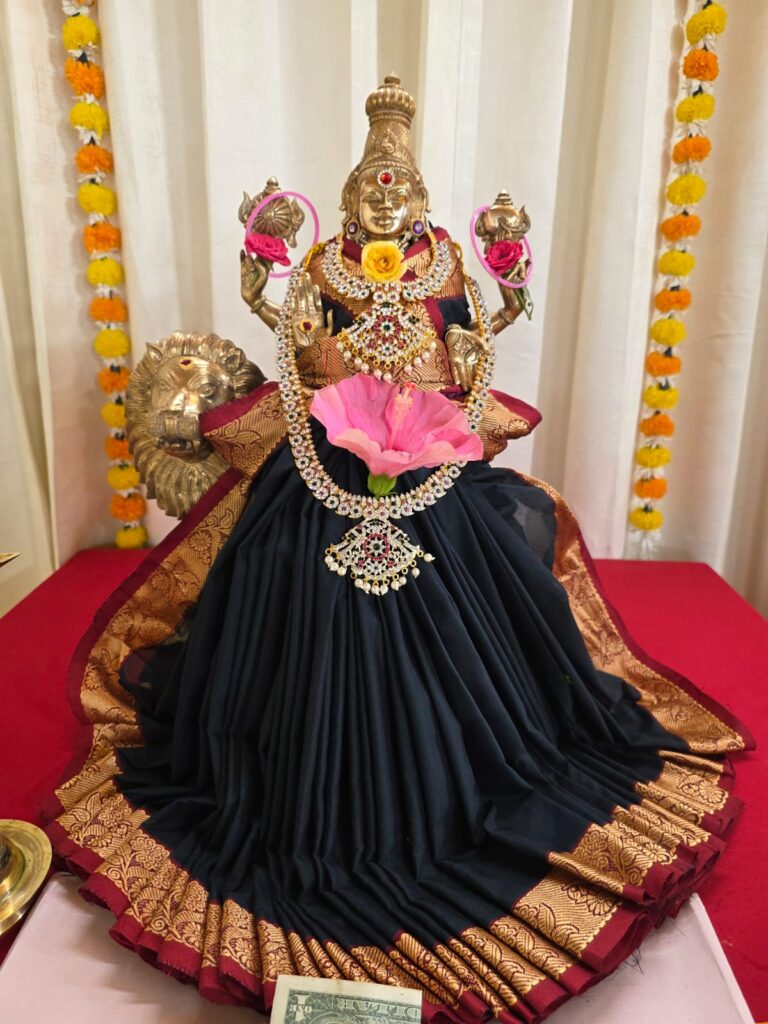
The Grace of Lakshmi Devi’s Alankaram
Lakshmi Devi, the goddess of wealth and purity, is traditionally adorned in silken sarees, lotus flowers, golden ornaments, and kumkum. Her alankaram often includes coins, lotus motifs, and kalashams filled with rice and turmeric as symbols of abundance. During festivals like Varalakshmi Vratham and Deepavali, the beauty of her adornments becomes a central aspect of worship, inviting prosperity into devotees’ homes and hearts.
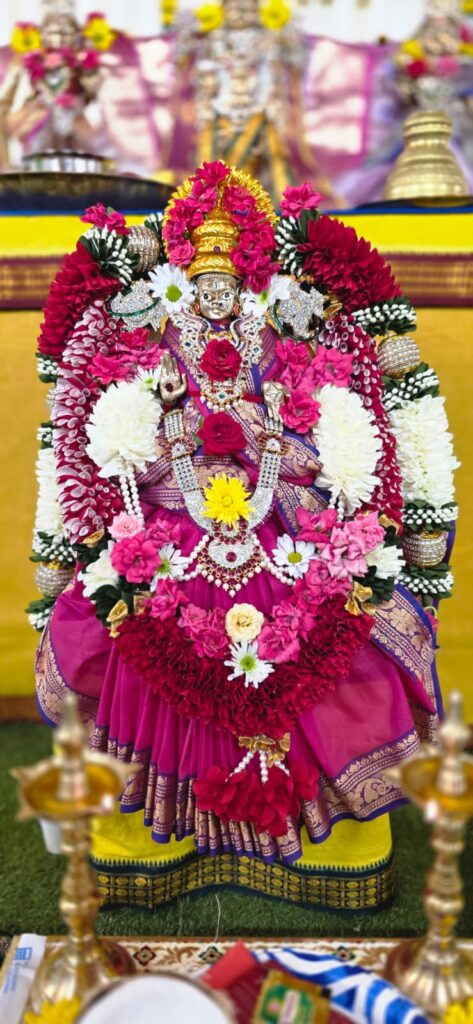
Lord Ayyappa – The Yogic Simplicity of Alankaram
Ayyappa Swamy, the celibate warrior yogi, is often decorated with a sense of austerity and devotion. His alankaram usually includes tulasi or rudraksha malas, simple black or orange cloth, and sandal paste. Devotees at Sabarimala and other Ayyappa temples witness a striking contrast between his ascetic simplicity and the fervent devotion of his followers. His adornment reminds us that true divinity lies beyond the external.
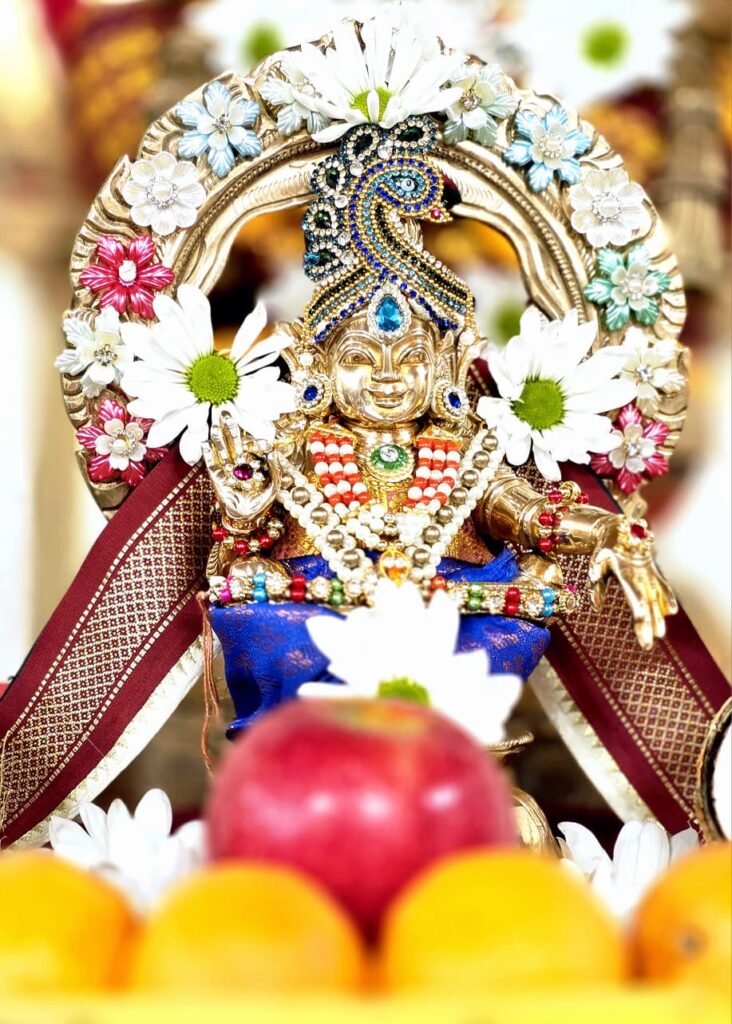
Subramanya Swamy – The Warrior God in Radiance
Lord Subramanya (Murugan) is known for his youthful glow and divine valor. His alankaram is rich with vel (spear), peacock feathers, garlands of jasmine and kanakambaram, and velvet or silk robes. Special attention is given to his six faces (Shanmukha), each symbolizing a divine power. During Skanda Shashti and Thai Poosam, Murugan temples showcase his resplendent alankarams in grand procession.

Lord Rama – The Royal Elegance of Dharma
Lord Rama’s alankaram reflects his identity as Maryada Purushottama – the ideal man and righteous king. Dressed in yellow or green silk, adorned with bow and arrow, and a calm yet regal expression, Rama’s deity form inspires peace and discipline. Flowers like marigold and tulasi, along with symbolic items like a kamandalu or Paduka, are added to his alankaram during Ram Navami and special poojas.
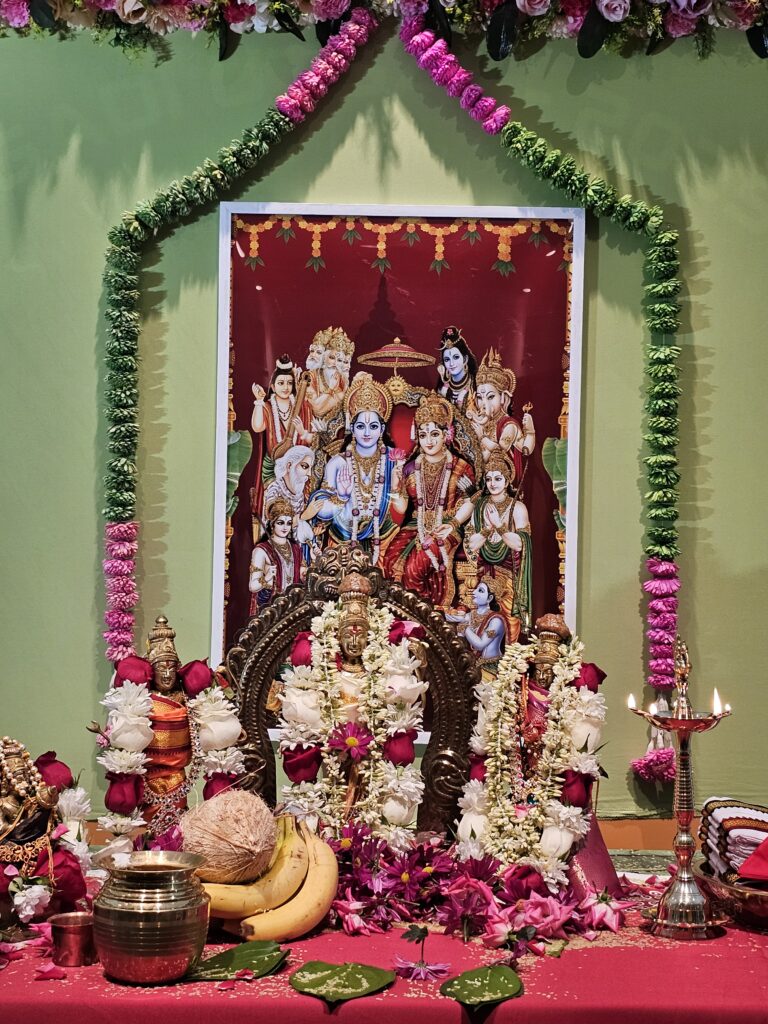
Hanuman – The Humble Strength of Alankaram
Lord Hanuman, the embodiment of strength and surrender, is often adorned with vibhuti, sindoor, and rudraksha. Unlike other deities, Hanuman’s alankaram reflects humility over opulence. A folded-hand posture (anjali mudra) and his ever-focused gaze on Lord Rama are part of his idol’s expression. During Hanuman Jayanti, his alankaram may include gada, mountain, and chanting banners of Ram Naam.
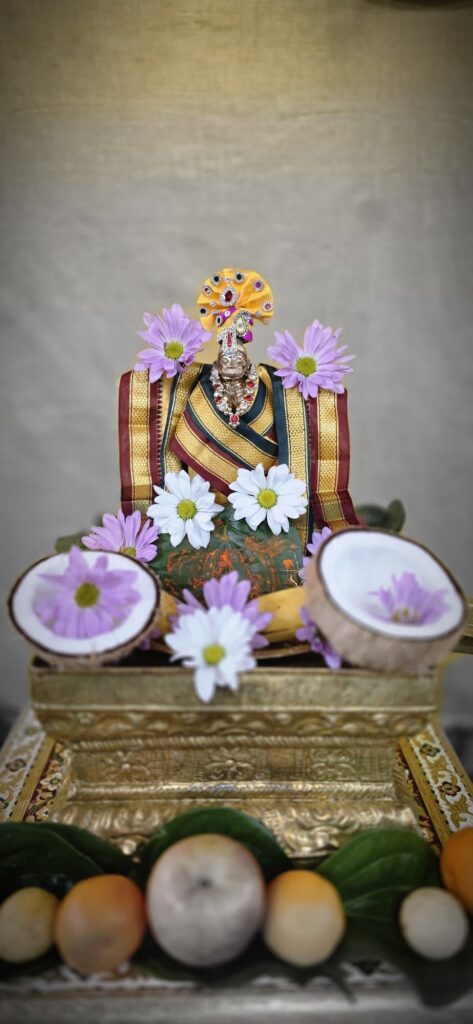
FAQs: Alankarams of Hindu Deities
1. What does “Alankaram” mean in temple worship?
Alankaram refers to the sacred decoration of a deity with clothing, flowers, jewelry, and symbolic items, reflecting the divine form’s beauty and significance.
2. Are deity alankarams different for each festival?
Yes, alankarams often change based on the occasion, day of the week, or festival, with each design telling a unique spiritual story.
3. Why is Spatika Lingam alankaram kept simple?
Because of its transparent crystal form, Spatika Lingam is naturally radiant. Its simplicity reflects Lord Shiva’s formless purity and spiritual vibration.
4. Which deity is usually adorned with the most ornaments?
Venkateshwara Swamy, especially in Tirupati, is known for his grandeur, with daily adornment of gold, diamonds, and silk.
5. Can devotees participate in the alankaram process?
In many temples, especially during festivals, volunteers help with flower offerings and decoration under priestly guidance.
Each deity’s alankaram is a visual expression of divinity, embodying their unique attributes—be it wisdom, power, prosperity, or devotion. These adornments are more than artistic—they’re acts of bhakti, transforming stone or metal into living divine presence. Whether it’s the radiance of Lord Venkateshwara or the humble aura of Hanuman, witnessing these alankarams fills the devotee’s heart with awe, reverence, and joy.



